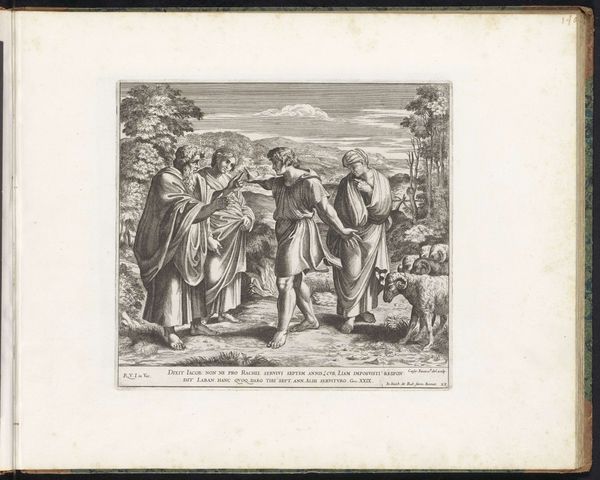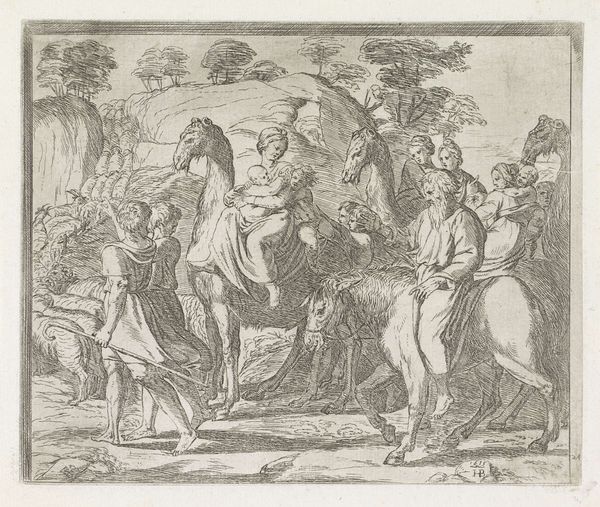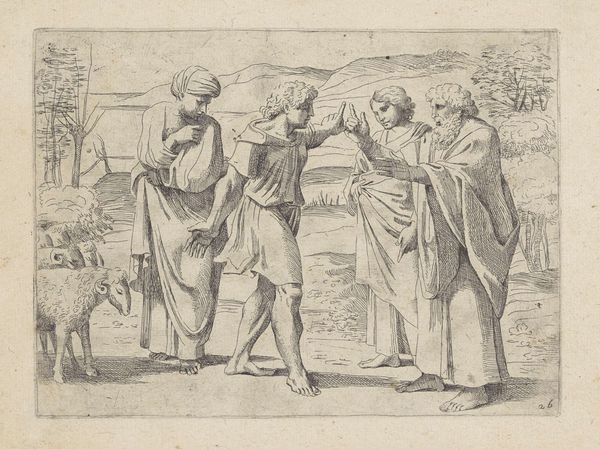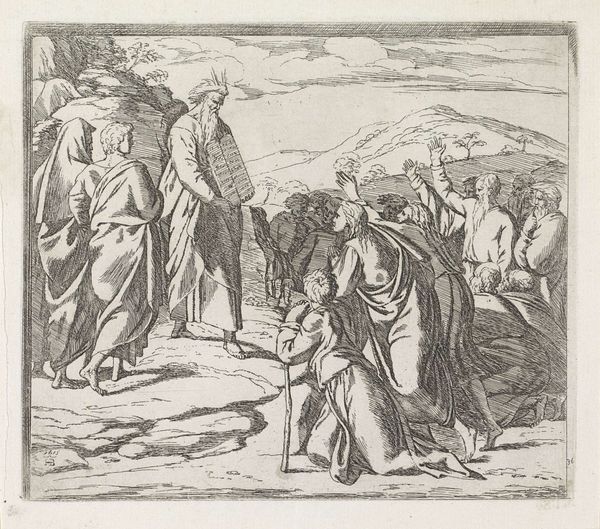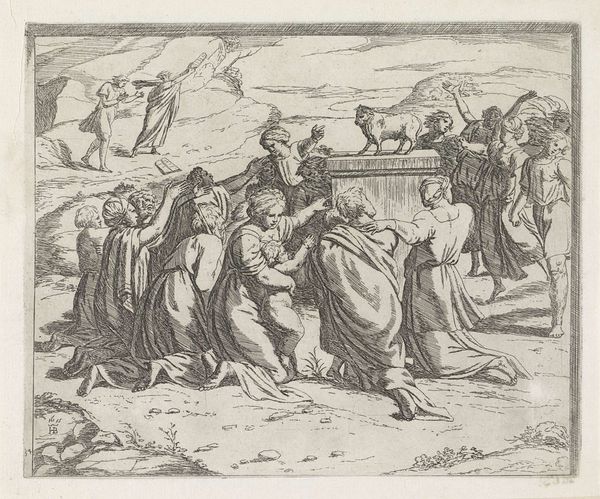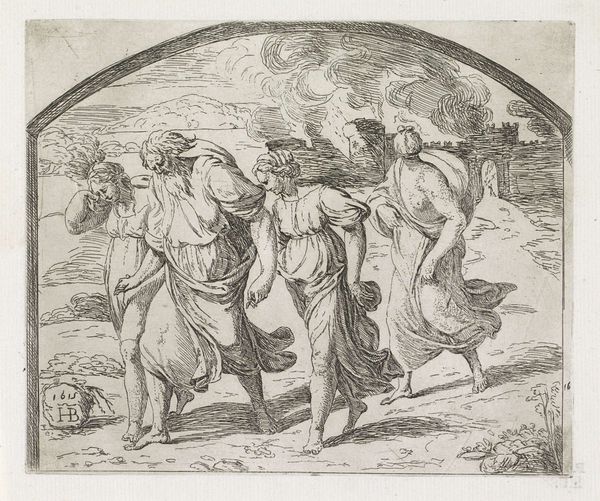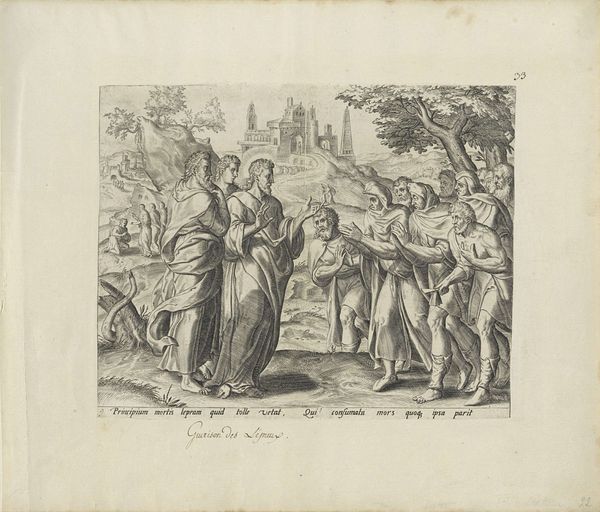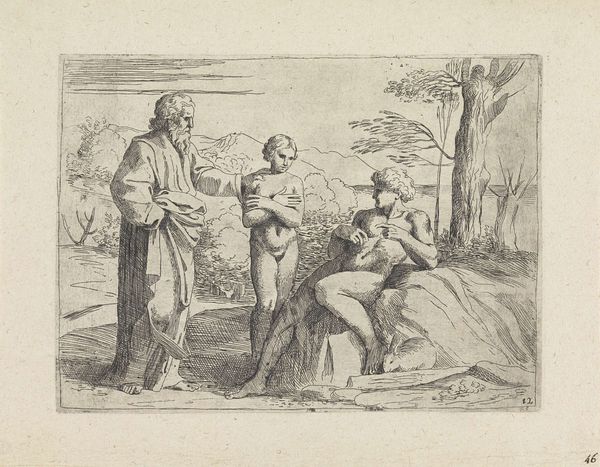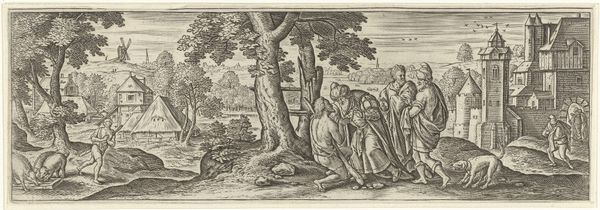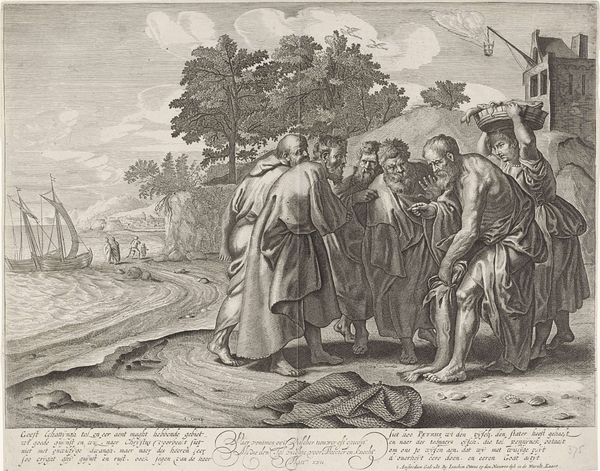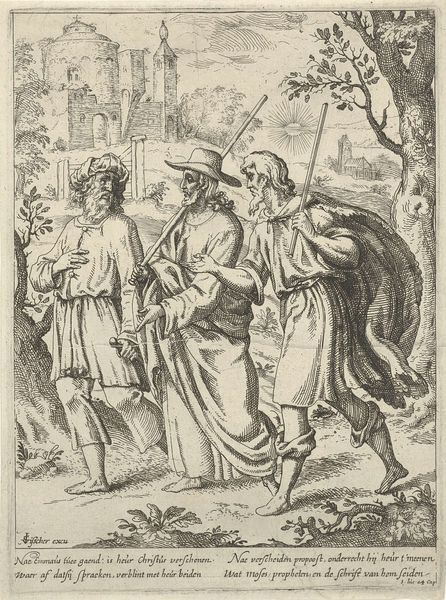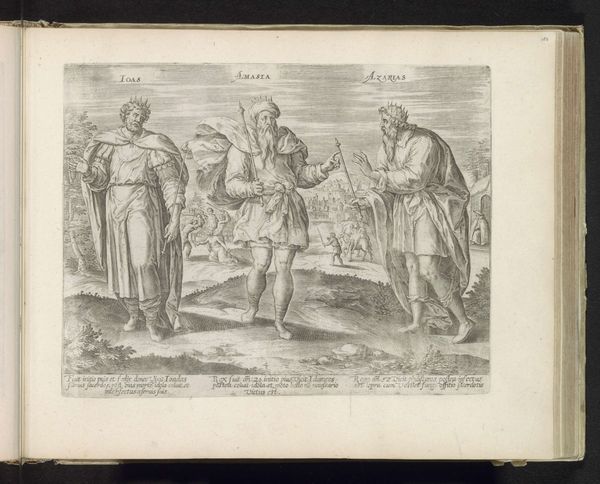
print, engraving
#
narrative-art
#
baroque
# print
#
figuration
#
line
#
history-painting
#
engraving
Dimensions: height 163 mm, width 197 mm
Copyright: Rijks Museum: Open Domain
Curator: Here we have Orazio Borgianni's engraving, "Jacob Complaining to Laban," created around 1615. It's part of the Rijksmuseum collection. Editor: Immediately striking is its air of restrained fury. It’s a tight composition, but everyone is kept at a remove – a drama playing out with a kind of controlled tension. Curator: Precisely. The material reality of an engraving allows for precise detail and tonal control. The density of line work here creates shading, lending volume to the figures and clothing, which is crucial to the storytelling, rooted in the biblical narrative from Genesis. Borgianni meticulously transferred his vision to the copper plate, allowing for reproduction and distribution. Editor: It's interesting to consider the context. The story represents unfair labor practices – Jacob's been tricked and cheated by Laban. In a way, this print acts as an early form of accessible visual activism, bringing social critique, hidden in the narrative, to a wider audience, highlighting the injustices experienced by a marginalized individual in that particular story. Curator: Considering that, look closer at Laban and his kinsmen on the left. They almost huddle together, a visual representation of collusion. It speaks to the power structures in place and how those in power protect each other. Editor: And Jacob, though the plaintiff, isn't centered. His gesture is directed outwards, demanding justice but somewhat lost. The composition reflects how systems are arranged: Jacob isn't necessarily the center of the story in terms of influence, despite his grievance. Curator: Right, and it underscores the difficulty faced by the working man negotiating labor exploitation then—and now. The existence of the print itself acts as both document and object—created in workshops and distributed—to further the reach and circulation of this message. Editor: It is a fascinating exploration of faith, power, and human interaction, especially considering what printmaking did for social commentary at the time. Borgianni created a timeless reflection of a narrative that we can still relate to today. Curator: Indeed. Looking closely at these kinds of details allows one to really think about artistic intentions, historical contexts, and the physical means of art production. It helps bring a richer, multilayered understanding of artwork and artistic vision, isn’t it?
Comments
No comments
Be the first to comment and join the conversation on the ultimate creative platform.
